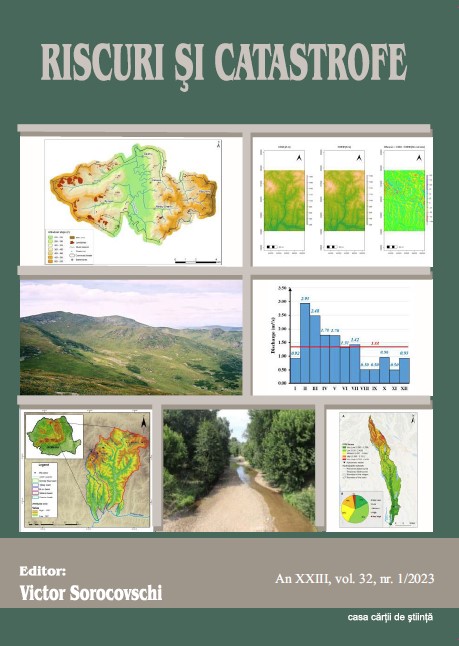An Evaluation of Lidar, EU-DEM and SRTM-Derived Terrain Parameters for Hydrologic Applications in Țibleș and Rodnei Mountains (Romania)
An Evaluation of Lidar, EU-DEM and SRTM-Derived Terrain Parameters for Hydrologic Applications in Țibleș and Rodnei Mountains (Romania)
Author(s): STRAPAZAN CARINA, Kocsis Istvan, Ioan-Aurel Irimus, BÁLINT-BÁLINT LÓRÁNTSubject(s): Geography, Regional studies, Physical Geopgraphy, Environmental Geography, Applied Geography
Published by: Editura Casa Cărții de Știință
Keywords: Digital elevation models;LIDAR;SRTM;EU-DEM;resample;
Summary/Abstract: Over the years numerous geospatial data sets have become accessible to users in the form of various types of digital elevation models (DEMs) at different resolutions. DEMs are often used to study the behavior and hydrological response of watersheds, and so came to be considered as a reflection of their physiographic characteristics. Accurate determination of a catchment's morphometric parameters plays a crucial role in distributed hydrological modelling and river flow estimation. This study is divided into two parts and objectives; the first part examines the accuracy of DEMs from different sources (EU-DEM, SRTM and LIDAR) in deriving terrain attributes by comparison, and the second one investigates the ability of resampling the 3 m LIDAR DEM to coarser cell resolutions, to accurately represent the extracted hydrological features. In order to evaluate the quality and precision of SRTM and EU-DEM, the high-resolution 3 m LIDAR DEM was used as a reference data set due to its higher degree of accuracy. Firstly, this data set was resampled to 25 m and 30 m to match the EU-DEM and SRTM cell size, and all of them were re-projected in order to have the same Stereo 70 coordinate system for Romania. A comparison has been carried out between the derived hydrologic and terrain variables of the different DEMs. For the second part of this research, LIDAR DEM was also resampled to 10 m and subsequently, another similar evaluation was made, but this time with regards to different cell resolutions (3 m, 10 m, 25 m and 30 m). Several catchments of various drainage areas (Țibleș, Runc, Sălăuța and Valea Caselor) located in Țibleș and Rodnei Mountains were chosen as study areas for this research. Several resampling techniques available in ArcMap were evaluated, and the comparative analyzes were carried out using the R software. Results revealed not only the LiDAR's superior accuracy as compared to the other data sets, but also the possibilities offered by the latter for deriving the hydrological characteristics of a mountainous area, contingent upon what the user aims to achieve.
Journal: REVISTA RISCURI SI CATASTROFE
- Issue Year: 32/2023
- Issue No: 1
- Page Range: 39-58
- Page Count: 19
- Language: English

